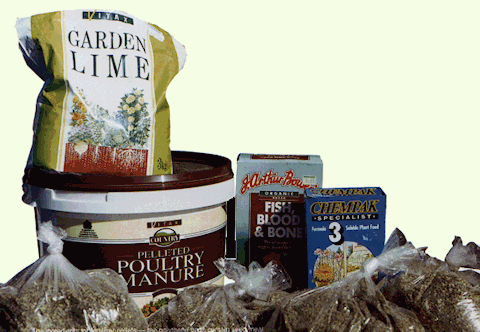
| |
| Home |
| Starter Trees |
| Bonsai |
| Yamadori |
| Accents |
| Services |
| Special Offers |
| Tutorials |
| Book & DVD Reviews |
| Links |
| Contact Us |
| Organic Fertilisers | ||||||||||||||||||||||||||||||||||||||||||||||||||||||||||||||||||||||||||||||||||||||||||||||||||||||||||||||||||||||||||||||||||||||||||||||
Advice differs widely on fertilising bonsai and can be confusing. This is partly due to the numbers of fertilisers now available to the bonsai grower and also because of the different planting mixtures used. Also, trees at different stages of development require specific feeding regimes to achieve the desired objectives. This is therefore a subject which is crucial to success and will pay great dividends to the grower that feeds correctly. Whether you use organic, chemical or a mixture of the types of feeding is entirely up to you. There are advantages and disadvantages to both. My aim here is to give you some knowledge of what is required by the plants and what the various fertilisers can offer. Many Japanese growers use solely organic fertilisers, which suit the akadama growing medium well. A slightly different approach is required:- ORGANICSOrganic fertilisers are appropriate for the maintenance of a tree that is well shaped and when ramification has been developed. The advantages that organic fertilisers possess are:- They are lower in strength & unlikely to “scorch” the roots and kill a tree. (Over-fertilising results in osmosis causing the roots to effectively work in reverse.) Organics are longer acting as they do not leach out with the first rainfall. They encourage soil bacteria and development of beneficial mycorrhyza (see below), whereas chemical fertilisers have been shown to kill them. With a little effort, some of the organic fertilisers can be secured for free. The organic matter, that makes them "bulky" in comparison to inorganic fertilisers, provides greater benefits than the simple nutrient analysis in the table suggests. This is because they also contain levels of essential micronutrients or trace elements such as iron, manganese, copper, zinc, boron, molybdenum and chlorine. There are disadvantages with organics but these are largely cosmetic:- They may be less readily available. Some are smelly for a while. They can sometimes attract flies to lay their eggs. Some mould may form on the surface of pellets as a result of the slow decomposition. They are currently relatively expensive if bought ready made.
Home-made fertiliser pellets
The pellets are often seen in pictures of Japanese bonsai and can easily be home made. The problem with most of the recipe’s that I’ve found is that they are based on old Japanese techniques or American ingredients. All of the ingredients that I use are available in the UK, though some require a little searching. Rapeseed, soybean or linseed meal are available through agricultural or larger pet food suppliers. Fish emulsion should be available from good garden centres but I use blood fish and bone. This combines three of the original ingredients in one readily available product. Any rapeseed milling operation produces tonnes of waste meal. If you can access small quantities of this it would be ideal. If difficulty is encountered suggest purchasing a larger quantity through your bonsai club. Another alternative would be to contact a local organic grower or farmer and see if they would be willing to sell on small quantities. For the small quantity of hemp seed meal that I use, I found an old coffee grinder invaluable. The seeds are bought whole as a pet food and ground to a coarse powder.
Rubber gloves and a face mask are a good idea, especially if the materials are dusty. Mix all of the dry ingredients thoroughly. You can use water but I break the organic rule and make up a full strength solution of 20-20-20 and add this slowly to the dry ingredients. Mix it in thoroughly until the consistency of dryish dough is achieved. John Naka says “a texture about as soft as an ear lobe” should be about right. Spread this out thinly and cut into small cubes, roll into cylinders or balls about 2cm across. These balls or pellets can be placed immediately on the surface of the soil near the edges of the pot. 1 for mame trees, 2 for middle sized and four or more for larger sizes. It is virtually impossible to overfeed with these pellets so the rules are not hard and fast. Any that are surplus should be left on a wire tray in a sunny, well ventilated spot to dry. Once dry, they keep well. Liquid Organic FertilisersSome people may think that the following are distasteful and not worth the bother. If you have the time, space and inclination though, the effort can be well worthwhile. Make holes in the bottom of a bucket or barrel and fill with comfrey leaves. Place a cover on top of the leaves and weight with a brick. The liquid that seeps out of the bottom should be caught on a tray and kept in air tight bottles. This is diluted with ten times as much water before using as a liquid feed. Suspend a sack of sheep, horse, rabbit or guinea pig manure in a barrel of water. Leave for a week and remove the sack. The liquid should be diluted with twice as much water before use. The contents of the sack can be added to the compost heap or manure pile for rotting down. Mix urine at the rate of ½ a pint to a gallon of water.
All Text Diagrams & Photographs © Kevin Bailey 1998 - 2008 On to Security article. Back to Tutorials
|
